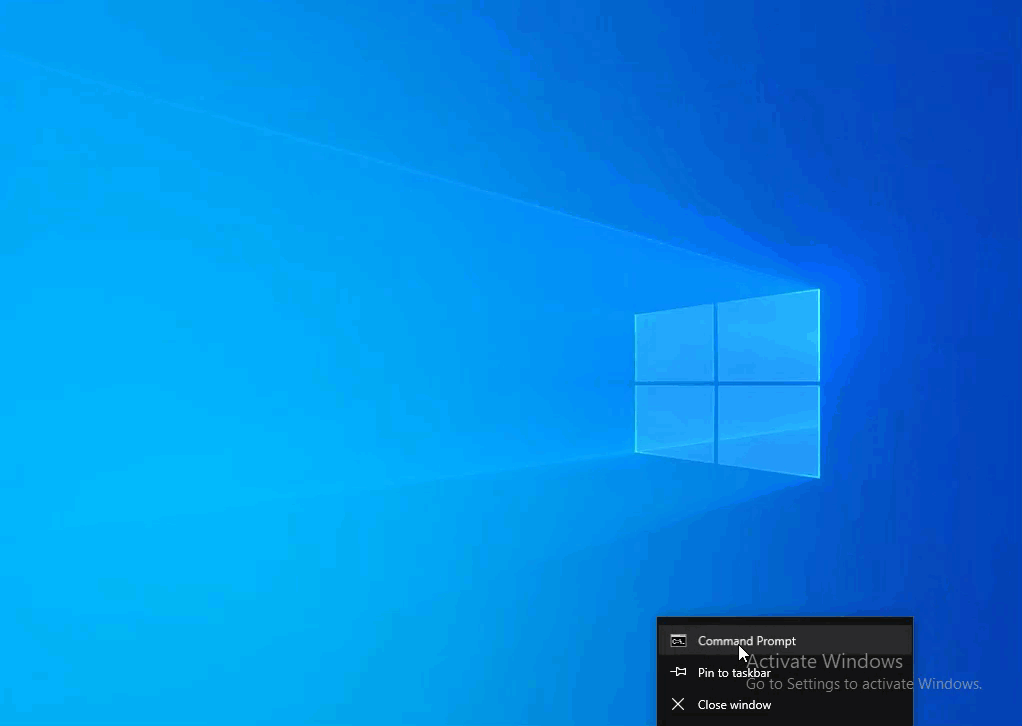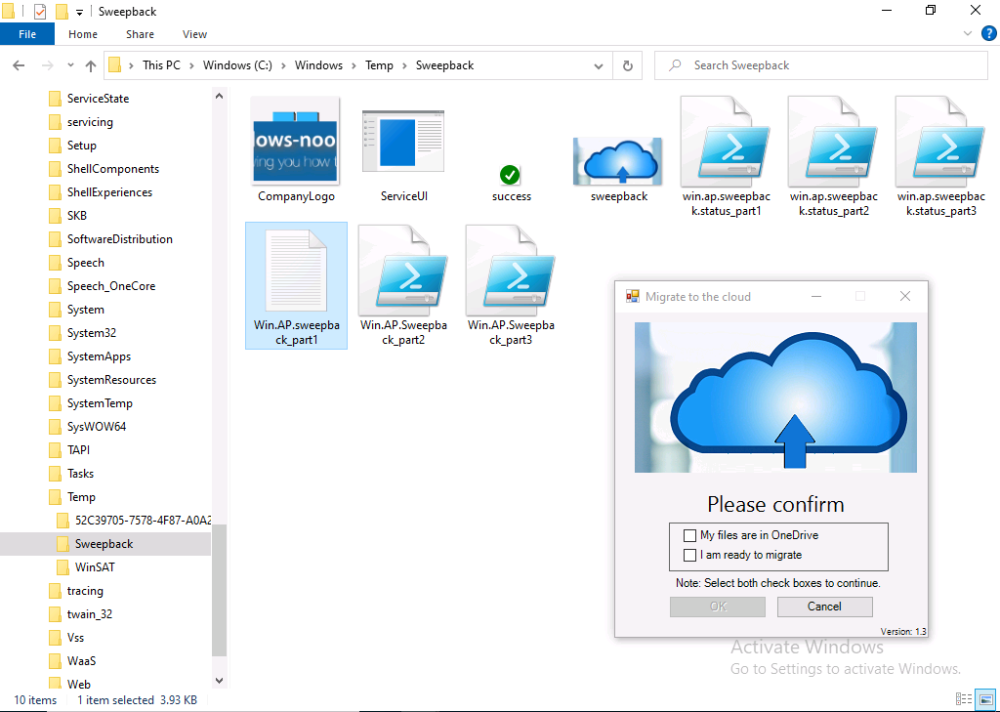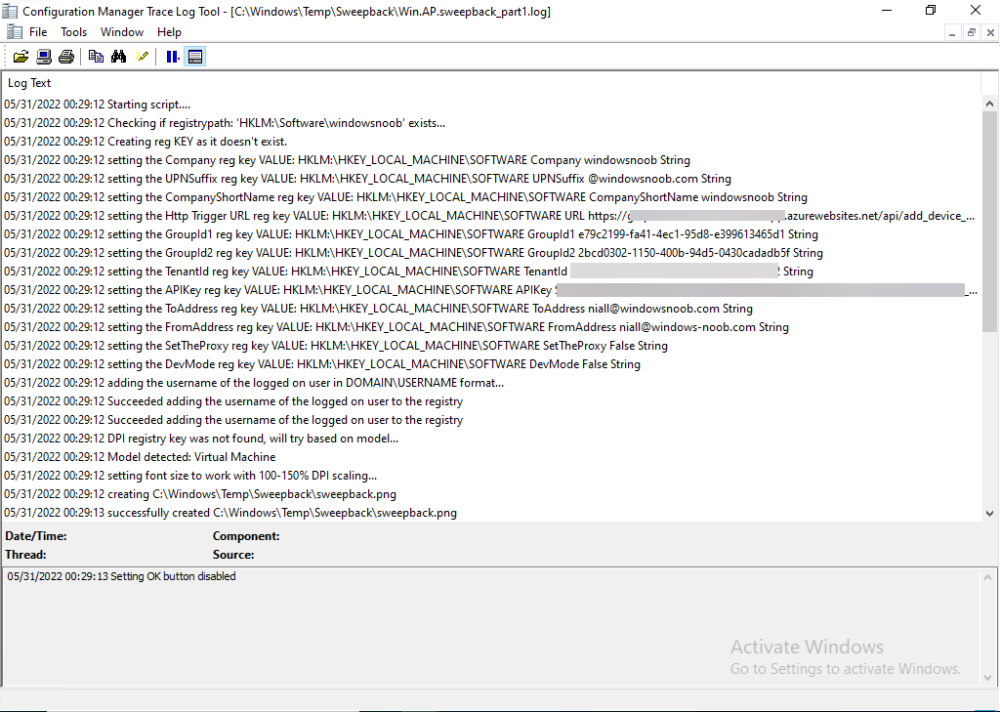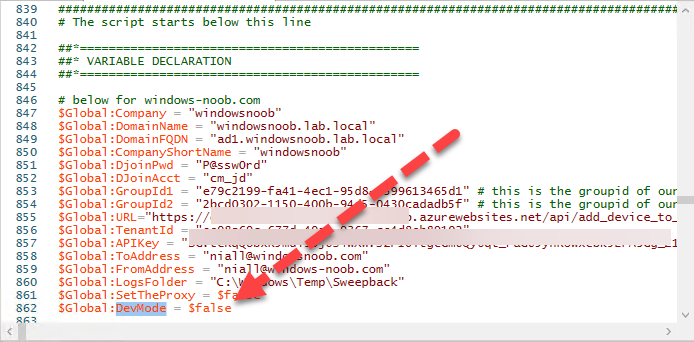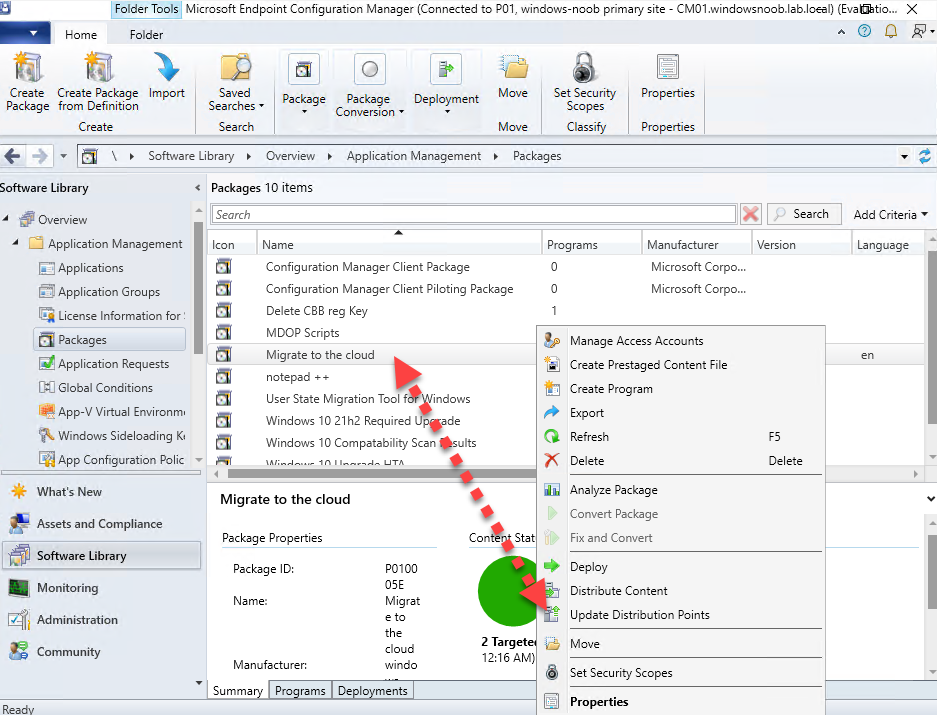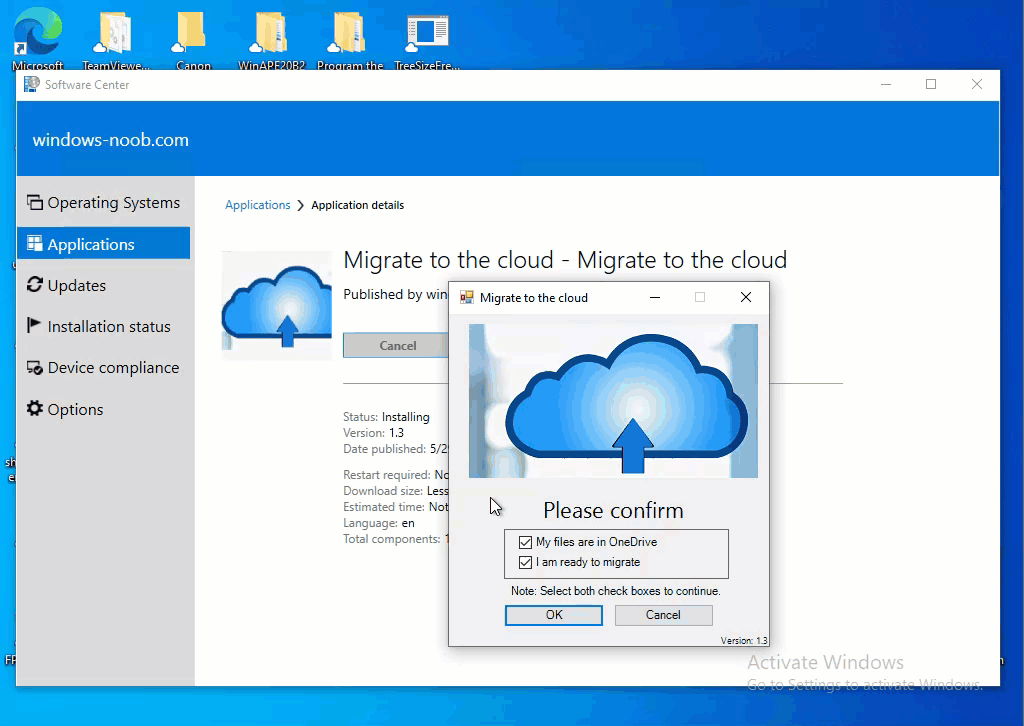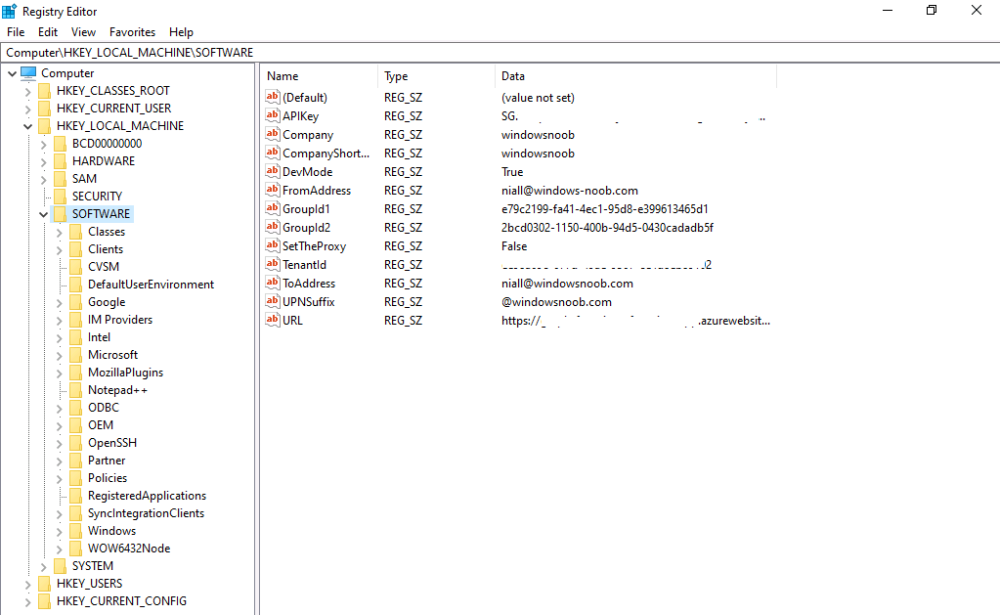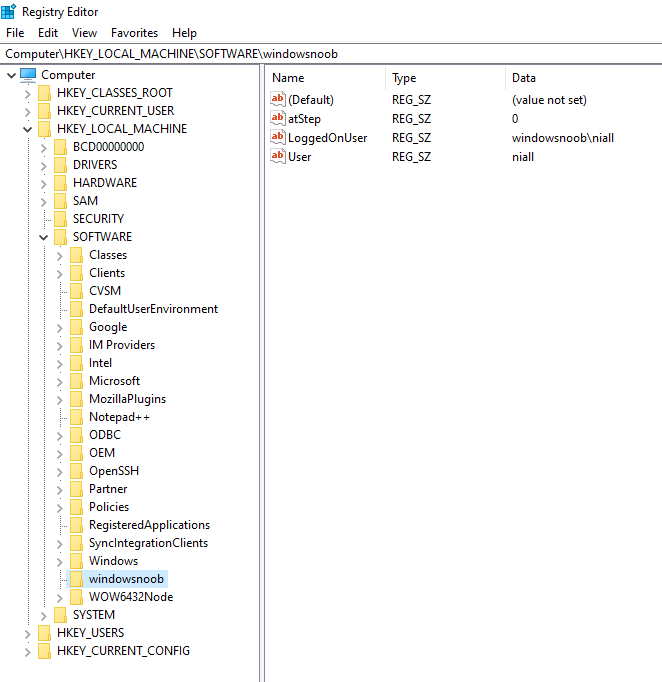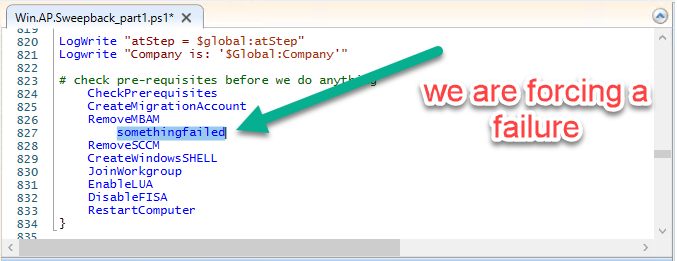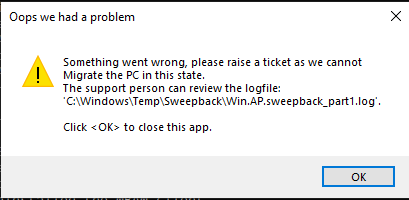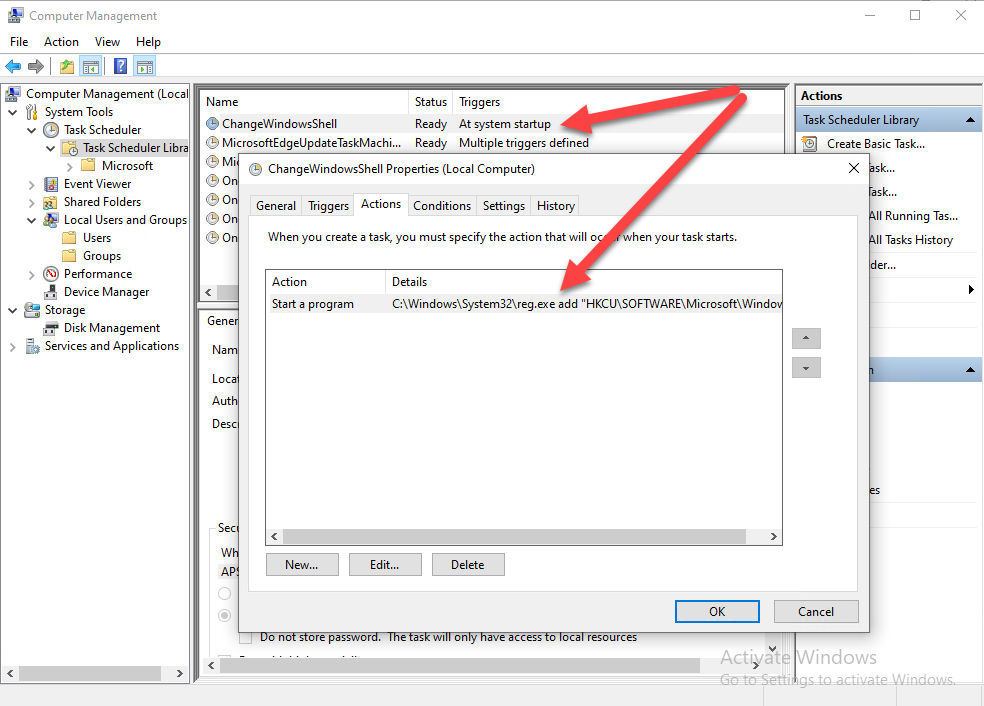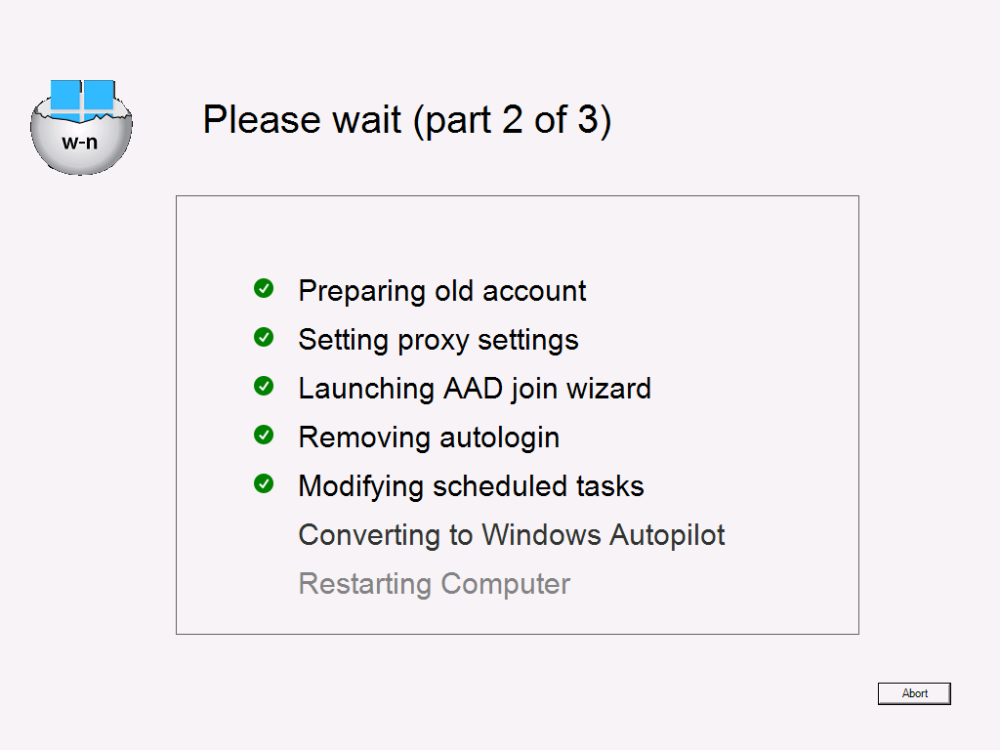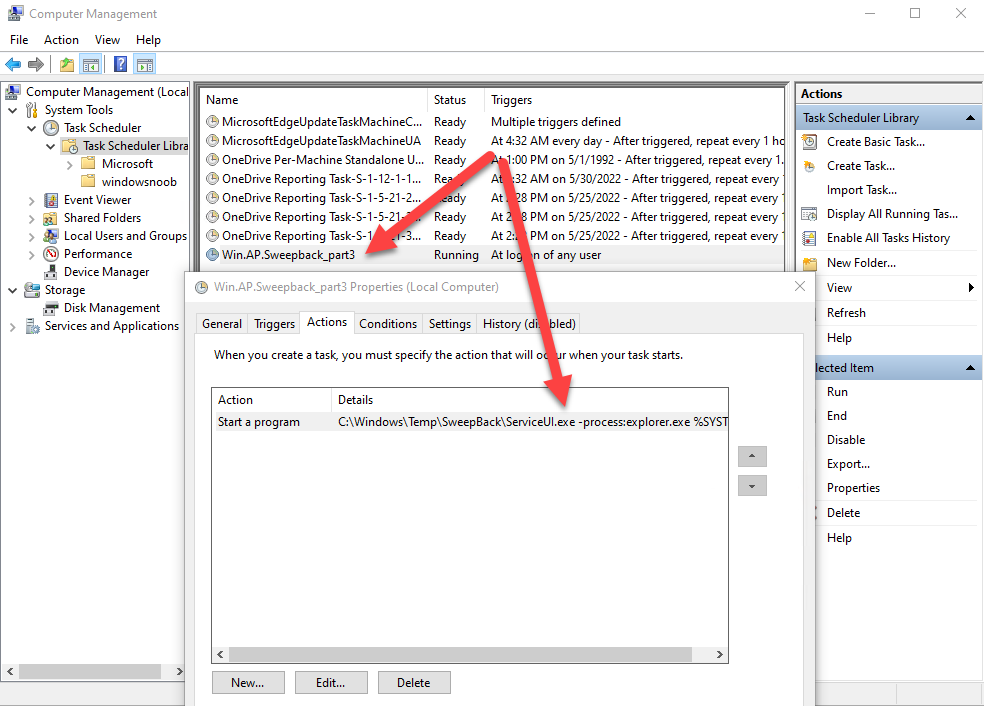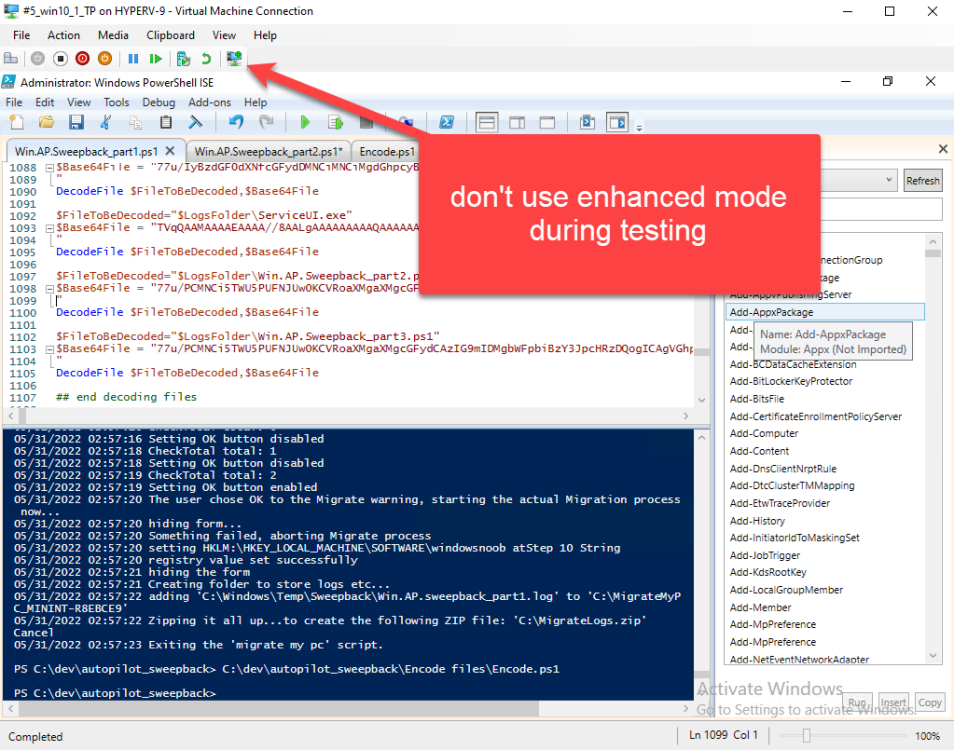Introduction
This blog series is comprised of 3 parts. In part 1 you reviewed a video of the solution and then carried out the initial steps to set everything up. In part 2 you saw how you could modify files, text and graphics to customize the app so that it matched with your company look and feel. In this part you’ll look at troubleshooting to assist you with a deeper understanding of the solution and using that knowledge to make it work in your environment as quickly as possible.
- Migrate to the cloud – Part 1. Setup
- Migrate to the cloud – Part 2. Customization
- Migrate to the cloud – Part 3. Troubleshooting <- you are here
Step 1. Test the app using SYSTEM context
During the testing phase, use SYSTEM context to test the scripts. This verifies that everything you do will work correctly when it’s eventually converted into a package/application in ConfigMgr. PSExec allows you to launch processes in SYSTEM context and as this app will run in SYSTEM context you should test and verify that it behaves correctly. To do that download PSExec from here and then launch an Administrative Command prompt. To launch a new command prompt in SYSTEM context issue the following command.
psexec /i /s cmd.exe
After launching the cmd prompt you can start Powershell to test the solution.
Step 2. Familiarize yourself with the log files
The app writes logs for each component that is running to the default log location which is C:\Windows\Temp\Sweepback as shown here.
There are two main components for each part, the main script itself, and it’s corresponding status script, each have their own separate log files.
You can open the log files with CMTrace and monitor them live or when debugging issues.
If you let the solution run to completion the following log files are generated in the default log file location of C:\Windows\Temp\Sweepback
- Win.AP.sweepback_part1.log
- Win.AP.sweepback_part2.log
- Win.AP.sweepback_part3.log
- Win.AP.sweepback_status_part1.log
- Win.AP.sweepback_status_part2.log
- Win.AP.sweepback_status_part3.log
Step 3. Use devmode during development
While you are testing the solution in your environment and tweaking it, you should enable the devmode variable. This allows you to include an Abort button on the 3 status screens, this will aid in troubleshooting as you can close the status screen and monitor logs live in CMTrace.
Note: The Abort button does not stop the progress it just closes the currently open status screen.
To enable devmode find the devmode variable in the main script
and set it to $true, like so…
after setting the variable to $true, save the script and then update your package to your distribution points.
After doing so, you’ll find the handy Abort button on all three of the status screens allowing you to easily close the status screen and check logs/registry settings/event viewer.
When you’ve solved all your issues with the script, don’t forget to flip devmode back to $false.
Step 4. Familiarize yourself with the registry settings
The app writes several regkeys to the following locations, you can review them to verify that it’s writing the correct data. Below are the 2 locations that it will write to. The registry keys are used in the remaining parts so if not correctly written things will fail.
It writes to the root of HKLM\Software
and after the app is launched it writes to HKLM\SOFTWARE\Company where Company is your company name.
The atStep registry key records the step which is currently shown in the status screen (usually from 0 to 7 depending on which part you are in).
Step 5. Use the email ability
If and when the app fails, it should send an email to your configured email inbox via the Azure Sendgrid ability. You’ll need to configure Sendgrid as per the first part of this series and add your APIKey to the main script.
Tip: You can manually force a failure (to capture logs etc) by calling the somethingfailed function during script execution as shown here.
When running the script with that forced failure, the following will appear
Here’s an example of an email sent to your inbox when something fails.
and the zip itself contains all logs generated at that point
Step 6. Scheduled tasks
The solution uses scheduled tasks to auto start parts, such as part 2 and part 3. During part 1 it will create a scheduled task to change the Windows Shell used during part 2, you can see that scheduled task here (sometime during part 1) before starting part 2.
this scheduled task will be deleted upon successful completion so if something goes wrong, you can always ask the end user to restart the computer and if you are lucky it’ll launch the scheduled task for that part and continue…
Below you can see the scheduled task used to launch part 3 (which is created during part 2).
Step 7. Test virtually
When testing this solution, use virtual machines such as Microsoft Hyper-v (Generation 2) or VMware Workstation and take snapshots before running the script. If you do test it using hyper-v, run the scripts with enhanced mode OFF otherwise it’ll fail to detect the logged on user.
Once you’ve ironed out all the bugs, copy the scripts to your package source and test them via Software Center !
Well that’s it, I hope this information has motivated you enough to start migrating your computers to cloud management !
until the next time, adios !
cheers
niall.


